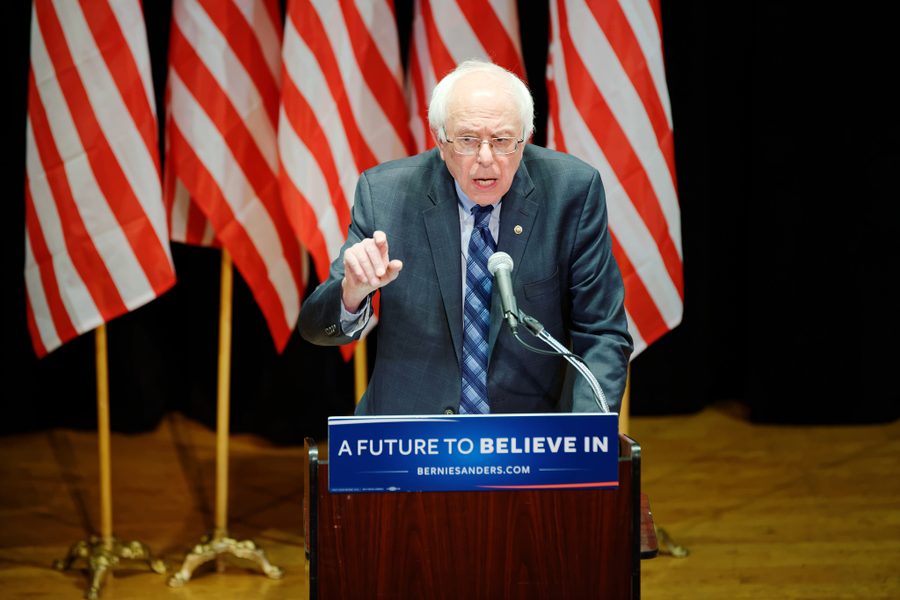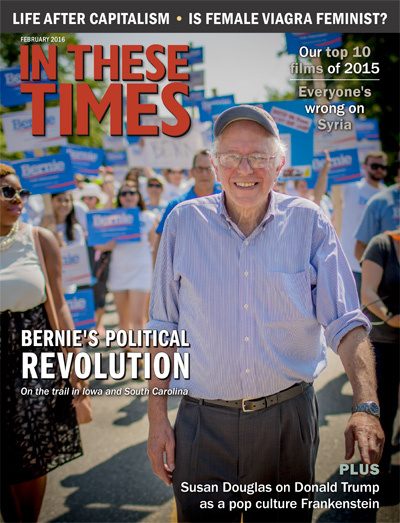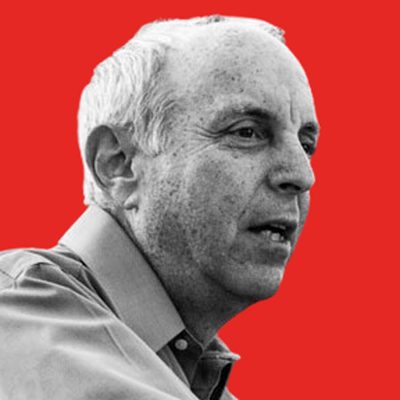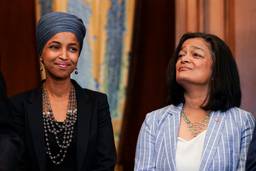Bernie Sanders’ Election Would Mean the End of ‘Too Big To Fail’ on Wall Street
Why have the power players of the Democratic Party allowed this to continue?
Larry Cohen

On January 5 at Town Hall in New York City, Bernie Sanders delivered a major policy speech in which he declared that he will “break up any banks that are too big to fail and that big bankers will not be too big to jail.”
His speech and the audience reaction almost seemed like an alternate ending to Adam McKay’s new blockbuster film on the 2007-08 financial meltdown, The Big Short. After watching the movie’s portrayal of how Wall Street’s greed and recklessness led to our economy’s collapse, it’s hard to argue against Sanders’ demands to increase taxes on the billionaires and break up the banks, and use the revenue to fund better health care and education.
Sanders advocates a modern Glass-Steagall Act (the first one was repealed by President Bill Clinton, who in 1999 called the act “no longer appropriate”) that would separate commercial and investment banking, and thereby separate home mortgage banking from speculation involving derivatives of those same mortgages. When you add in Sanders’ demands to end Super PAC campaign funding and his own refusal to accept Wall Street funds in the current campaign, we are presented with a sharp contrast to Hillary Clinton, who opposes reinstating Glass-Steagall and has taken upwards of $6 million from Wall Street supporters.
In the last 50 years the financial sector’s share of our GDP has almost quadrupled. The Big Short illustrates how Wall Street keeps up that growth with little increase in real value but lots of high salaries and high living for bankers. As the film concludes, viewers realize we haven’t done much to change the financial sector’s rules since the crisis. Once Fed chair Ben Bernanke and Treasury let Bear Stearns fail and Lehman Brothers go bankrupt, they bailed out the rest and the culture of self-interested high living returned. Whether the next financial bubble is around housing or something else, the result is likely to be the same as in 2008.
Why have the power players of the Democratic Party allowed this to continue? Why have establishment Democrats proven so enamored with free markets and addicted to the political contributions from financial high rollers that they rushed to embrace Hillary Clinton with no real demands for progressive positions on finance or much of anything else?
We learned in 2008 that the words uttered during a primary campaign bear little resemblance to presidential policies. For example, candidate Barack Obama’s promises to rewrite NAFTA never came to fruition, leading instead to the Trans-Pacific Partnership, that if adopted would do little for workers rights in any nation, U.S. jobs or living standards, or to provide environmental standards beyond improved fishing practices. Today, we get words from the Clinton campaign but no clarity on breaking up the banks that are too big to fail or real separation of commercial and investment banking.
Laying out the destructive consequences of deregulated finance, The Big Short implicitly encourages the audience to support major reforms of our financial structures — the kind of reforms Sanders argues for. Viewers identify with the working-class family that loses its home, despite having diligently paid the rent each month, because the landlord fell behind when his adjustable rate mortgage shot up. We even identify with those who foresaw the system’s collapse, bet against the investment banks and sold their leveraged mortgage debt “short.” Those investors profited hugely from widespread misery, but at least they acknowledged it.
The answer to such financial disaster is not a repeat of a Bill Clinton presidency, all but guaranteed to produce a new crop of short sellers who profit once again and bankers riding the bubble. The answer is a “political revolution,” as Bernie calls it — not just for a political democracy with voting rights in and money out, but also a financial revolution that breaks up the banks, separates commercial, consumer and investment banking, and slams shut the revolving door between Wall Street, government regulators and White House officials.
As Bernie says, “Enough is enough.” We can still dream of an America where making things and providing real services is at the heart of what we do. We can dream of an America where Wall Street’s easy money doesn’t lure away young college graduates from teaching or healthcare.
As we begin 2016, let’s commit to real change. Bernie Sanders has challenged us to join him in a political revolution that goes far beyond the presidency. Let’s take him up on it. After all, if we won’t, who will?
Larry Cohen is board chair of Our Revolution and the past president of the Communications Workers of America. He has been on the Democratic National Committee since 2005.









